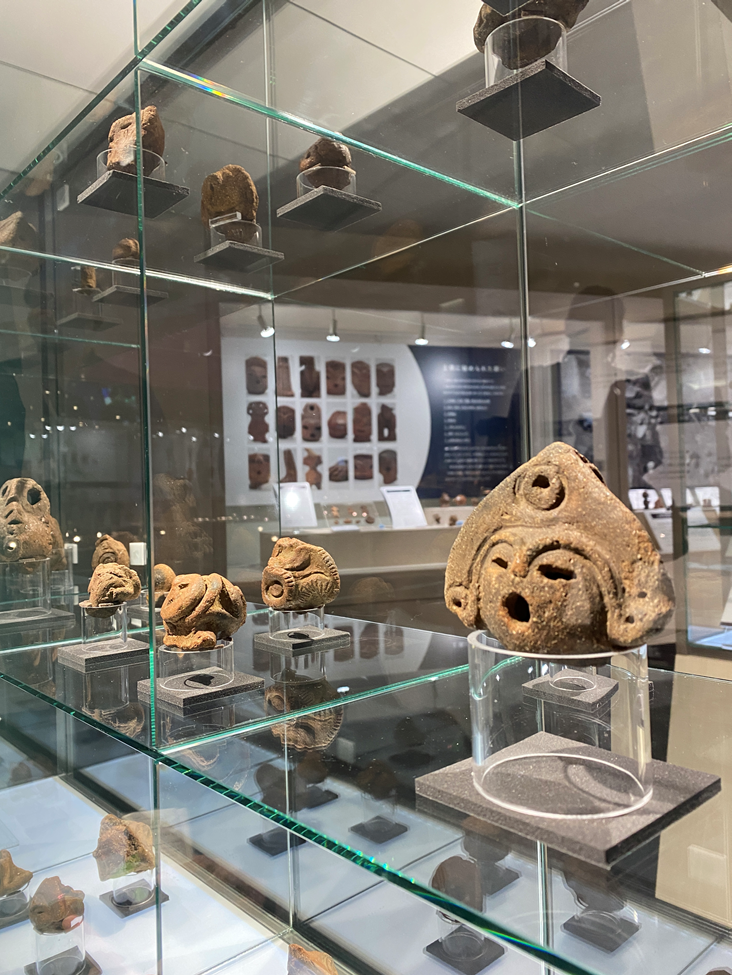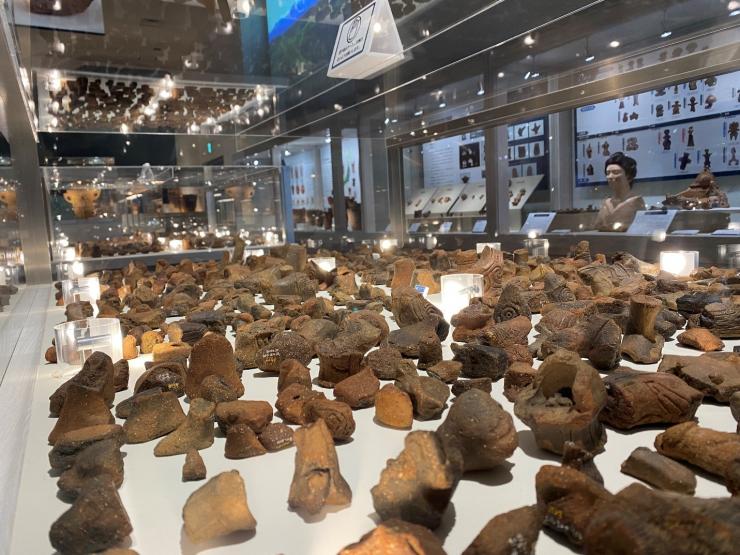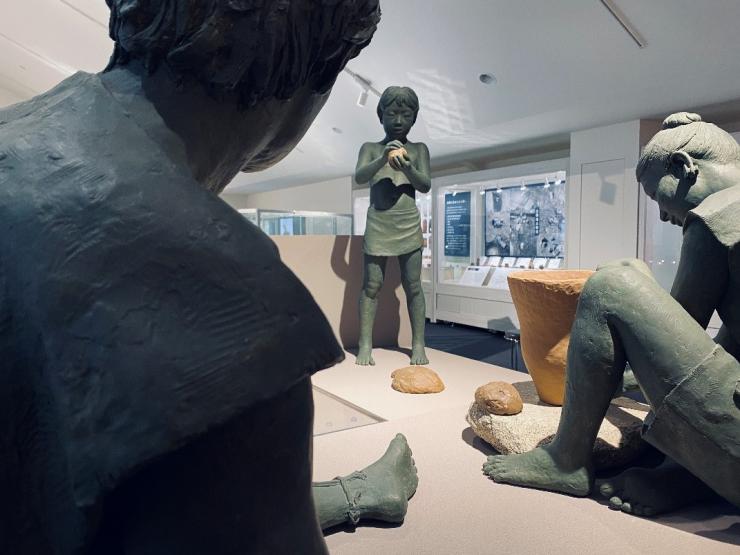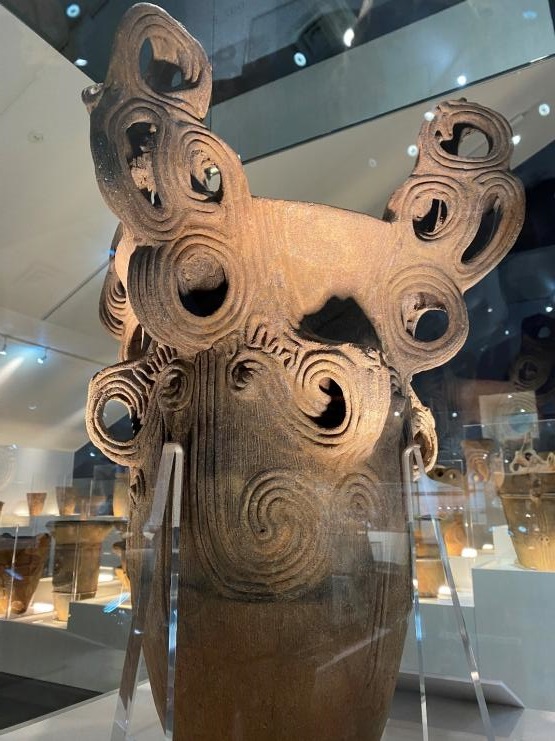Main content starts here.

Over thirty years ago when the the Chuo Expressway was being built, small earthenware objects were found just a meter under the soils of Yamanashi. While some were just small fragments, others were beautiful crafted heads and vases—still intact. This excavation area became known as the “Shakado Iseki Archeological Site.” Since then, just a few miles out from the Chuo Expressway, the Shakado Museum of Jomon Culture was developed as a way to showcase these historical artifacts and help raise awareness about this important period in Japanese history

In the second floor of the museum, the main display room will greet you with hundreds of beautifully crafted clay pieces, glimmering under the museum lights. It is quite usual for Jomon artifacts to be found in pieces or fragments, and in fact, archeologists have found that most of them were likely already broken before they were buried. An interesting theory is that the Jomon people may have intentionally broken each piece before burying them, for a particular reason that we are unaware of (similar to the Greek custom of plate-smashing).
You’ll also get to meet the two beauties of Shakado, “Miss Shakka-chan” and “Miss Shakko-chan.” These two dogū heads are endearingly revered as the Venuses of the museum.
Towards the back of the museum, you can see a life-size diorama of what a day in the life of a Jomonian may have looked like, as well as a whole section dedicated to Jomon doki. To your left is an array of upside-down vases. It is said the Jomon people were a matriarchal society that valued women and childbirth greatly. And because this was a period before hospitals, doctors, and even antibiotics—many children died during or before childbirth or within their first few years of life. Many theorize the reason behind why so many dogū were of pregnant women, is that they were used as praying for protection of children. And when a child died, they would bury one of the large earthenware pots at the entrance of the residence. This way, the mother and child could remain connected, and perhaps some sort of regeneration could take place, returning the child’s soul to the mother through the hole on the top of the pot.

Not all doki pots from the Jomon period were for burial. Many of them were made to store and also cook the fruits, nuts, and berries that made up most of the Jomon diet. With regeneration existing as a big belief among the Jomon people, it is also thought that the unique snake designs on their food vessels symbolized their own prayers for rebirth and regeneration (perhaps connected to the image of a snake shedding its skin and seeming reborn).

Snakes aren’t the only unique elements that can be seen in the Jomon designs, so as you walk through the wide selection of earthenware vessels, make sure to pay attention to the changing patterns, designs, and shapes. Each and every piece is truly a testament to the pottery skills and attention to detail that characterize the Jomon people.
On your visit to the Shakado Museum, if you manage to meet the very passionate museum curator, Mr. Ichinose, he will be sure to turn you into a fanatic just like himself! What’s more, maybe you’ll even get an exclusive look at some pieces hidden in the back… who knows?
More Info
Shakado Museum of Jomon Culture website:
https://jomon.co/en/point/detail/13/
Address: 764 Senbeiji, Ichinomiya-cho, Fuefuki City, Yamanashi
(15 minutes on foot from the "Shakado Iriguchi (entrance)" bus stop)
Published on
- April 14, 2022
Share
-

Fuji Subaru Line 5th Station & Mt. Fuji Travel Guide
March 3, 2025
Home of Mt. Fuji > Staff Journal > Shakado Museum of Jomon Culture

